WORLD FOCUS
Springing their way home for Chinese New Year
Faster, more options - China's annual chunyun migration has moved with the times
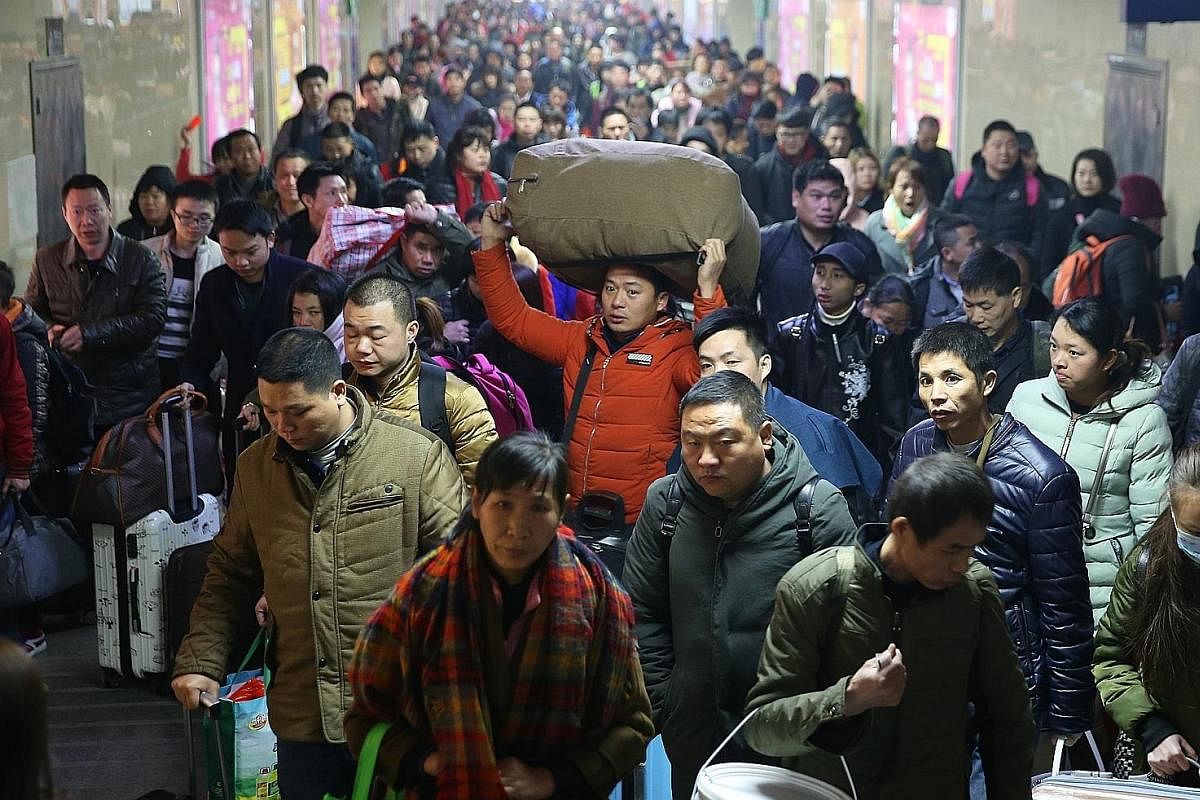
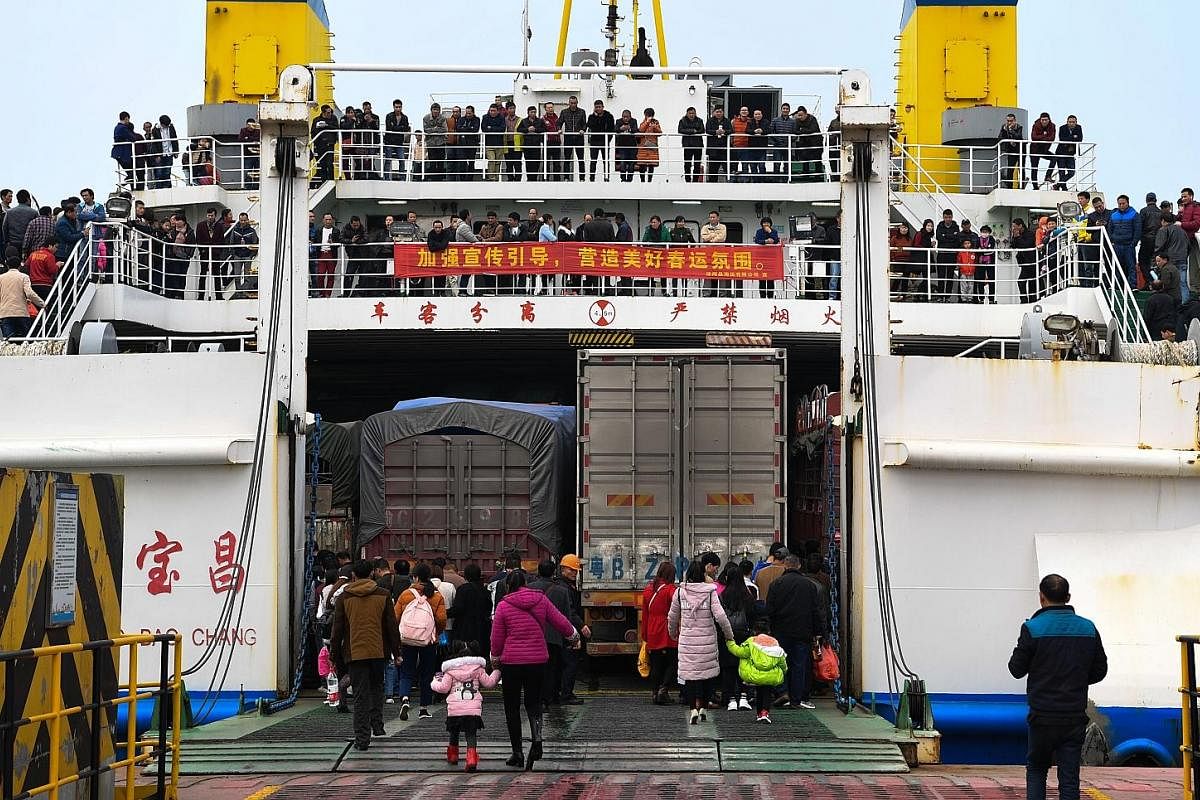
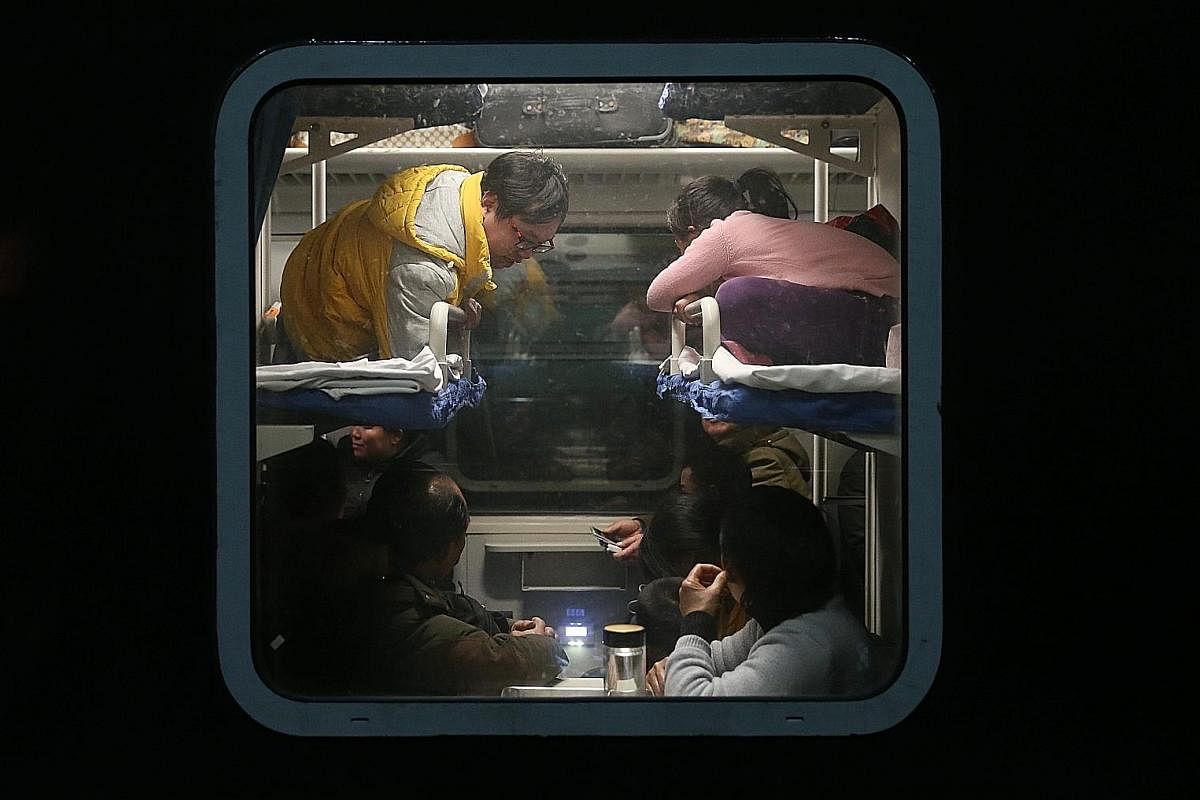
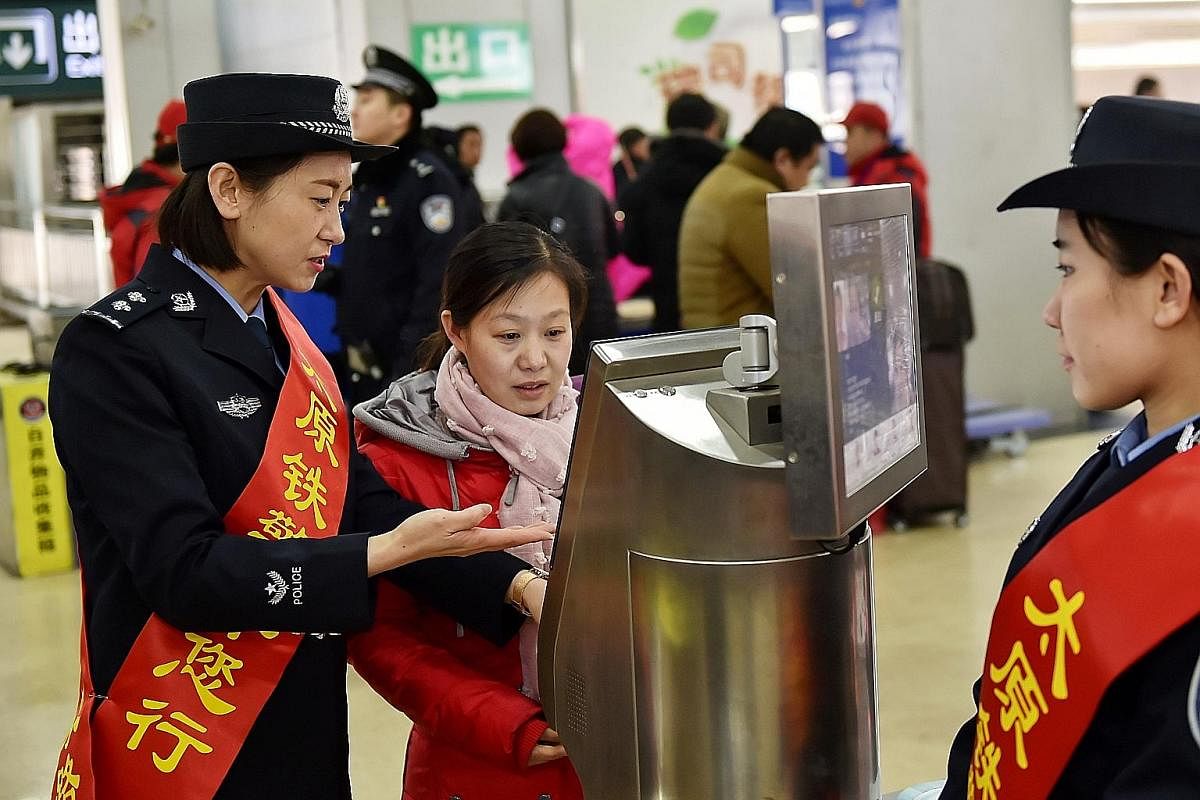
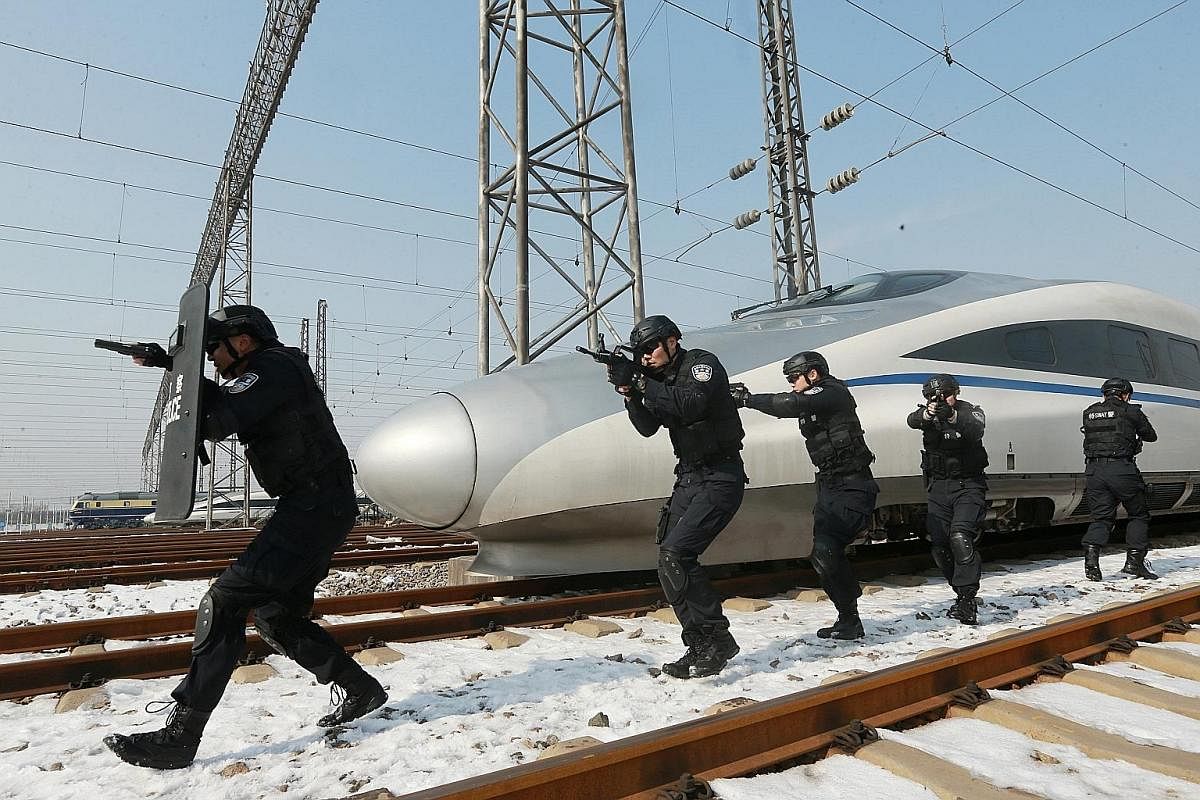
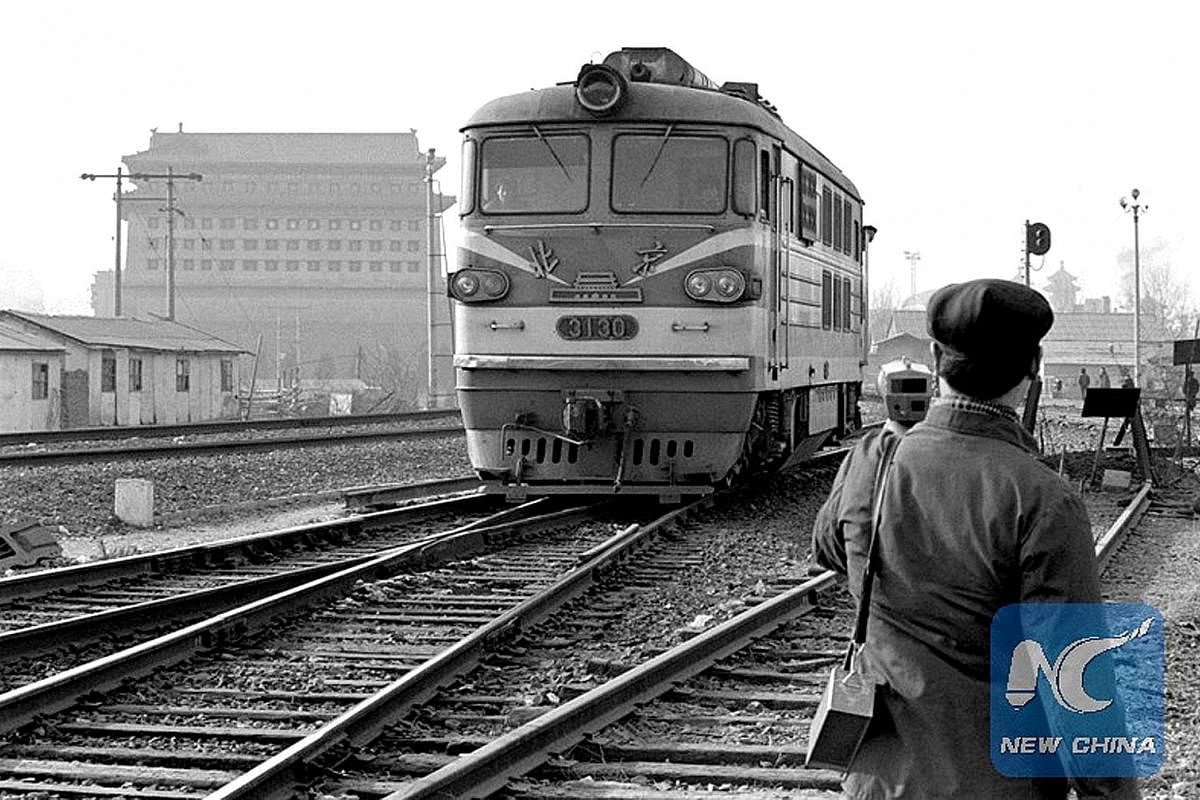
In one week, Ms Iris Lan will make a five-hour trip from Shanghai back to her home town in northern Shandong province. To cover the 800km distance, she will take a 3 1/2-hour high speed rail (HSR), followed by a 1 1/2-hour car ride.
For almost 20 years, Ms Lan, 37, has been making the annual trip home for her family reunion during Chinese New Year.
When she was younger, she used to take the regular trains, including on standing-only tickets. Six years ago, to avoid the anxieties and problems with trying to book a ticket, she started driving home.
Then in the past two years, the speedier and more comfortable HSR became her top choice.
"There have been many changes over the years in how I travel. What remains unchanged is that I always go home during this period," said Ms Lan, a supply chain manager.
As with hundreds of millions of Chinese across China, Ms Lan will be travelling during the Spring Festival travel rush - known in Mandarin as chunyun - from Feb 1 to March 12 this year. It is touted as the world's largest human migration, with one-sixth of the world's population on the move.
The first peak is expected to start several days before Feb 16, the first day of the Year of the Dog. People travel home from big cities such as Beijing, Shanghai and Guangzhou to small and medium-sized cities.
The other peak occurs on Feb 22, the last day of the week-long national holiday, when people travel back to the cities.
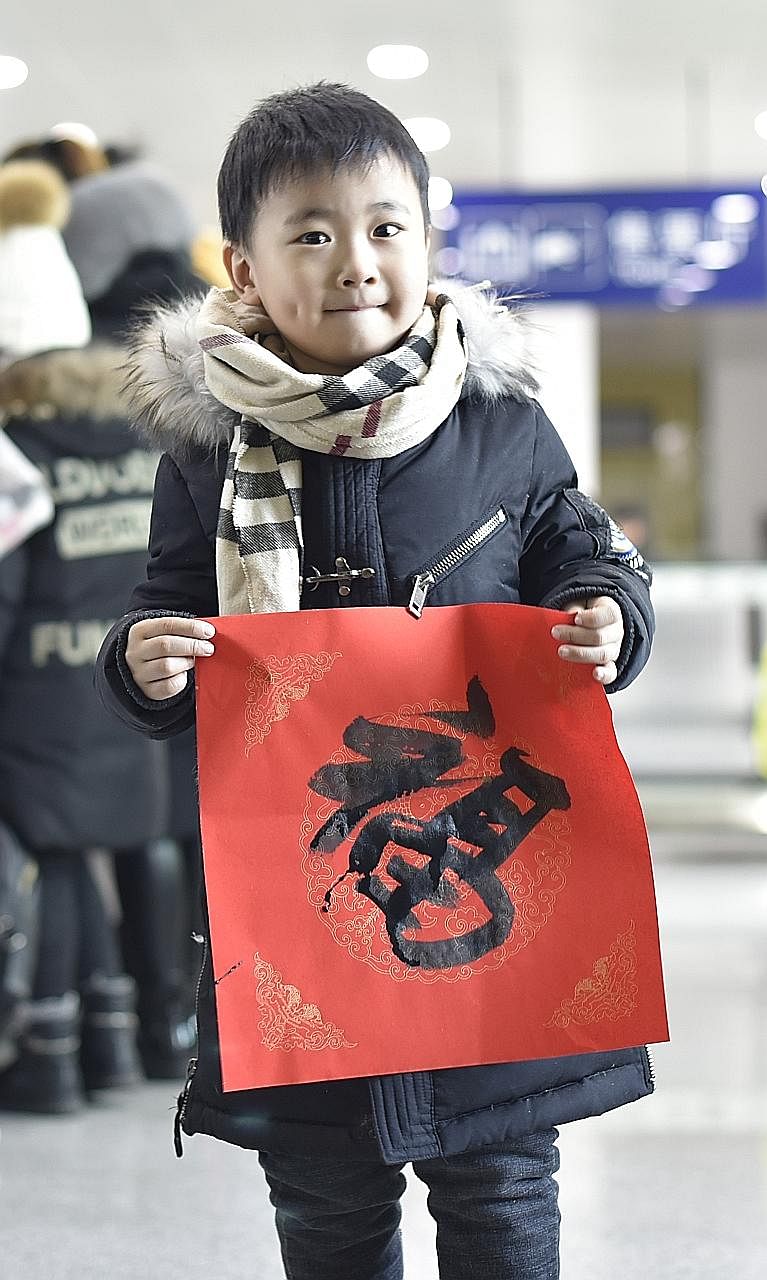
Experts and industry players say much has changed over the years during chunyun. People now have more transport options. A notable difference is the advent of the HSR network in the past decade.
By the end of last year, the network topped 25,000km, representing 66.3 per cent of the world's total high-speed railways. This year, another 3,038km of HSR has been added just in time for the travel rush, according to state news agency Xinhua.
Increasingly, the HSR, cars - self-drive or sharing with other travellers via car-hailing platforms - and planes have become more popular, said Beijing Jiaotong University's transport analyst Zhao Jian.
This is largely due to the rising affluence of the Chinese, noted Professor Zhao. Per capita disposable income in China rose by 62.6 per cent from 2010 levels to hit 23,821 yuan (S$4,985) in 2016.
According to a Xinhua report, about 100 million trips were made during the chunyun period in the 1980s. This year, around 2.98 billion trips will be made over the 40-day period, unchanged from last year, said the National Development and Reform Commission.
"The huge number of trips originally started with people who were sent to work or study in another city or province during the planned economy years," said Mr Liu Simin, vice-president of the tourism branch of the China Society for Futures Studies. "Then it shifted to include migrant workers from the rural towns and villages."
There are around 282 million rural migrant workers in China as of 2016.
MORE OPTIONS
Ms Zoey Zheng, 29, is another HSR convert. Since Beijing and the south-eastern Jiangxi province were linked up two years ago, high-speed rail has cut her travel time by half - from 11 hours on the regular train to about six hours.
"I'd download several movies in advance, and by the time I'm done watching them, I'm home," said Ms Zheng, a marketing communications executive.
"And I can even order food online, and get it delivered to the platform," she added, referring to the new on-demand food delivery service now available at 27 major railway stations across China.
Previously, train travellers typically survived on cup noodles during their long journeys.
For others, the switch is from public transport to private.
Shenzhen-based Wu Guotao, 39, readily ditched the train after he bought a car eight years ago. To get home to Yingcheng, a small town in central Hubei province, he needs to drive continuously for 14 hours over a distance of 1,100km.
Despite the possibility of getting stuck in a traffic jam for up to 34 hours, he still prefers driving.
"It's a lot more convenient... I won't be bounded by the fixed train times," said Mr Wu, who will join the travel rush on Feb 12 along with his mother, wife and two sons.
Marketing communications executive Zhang Xiao, 27, is likely to fly home this year, as the HSR has yet to be extended to his home town in western Qinghai, which sits on the high-altitude Tibetan Plateau.
The two-hour flight from Beijing would cost him up to 2,000 yuan, compared with the 500 yuan on a sleeper train trip that would take 30 hours.
"I feel I can afford to spend the money since I've been working for almost five years now," he said.
For those who end up with no train or plane tickets, they could turn to drivers who are going the same way.
Ride-sharing giant Didi Chuxing started offering inter-city ride-sharing service Hitch in 2016.
The firm estimates that some 33 million carpool trips will be made during this year's travel rush, a threefold surge from the previous two years due to better technology and expansion from cities to smaller townships.
Travellers told The Straits Times that carpooling, or pin che in Mandarin, is an option they would consider only in times of desperation.
"We have a lot of luggage, so it's very cramped and uncomfortable sharing a car," said Madam Tao Chunxiang, 48, a live-in helper who works in Shanghai.
NOT ALL TRAVELLING HOME
According to a report released by online travel agency Tongcheng and state-run China Communications News last December, 72 per cent of the people surveyed said they will head home for family reunions during the chunyun period.
Some 13 per cent said they would go travelling instead.
Experts observe that more people are using the week-long Chinese New Year holidays to travel with their families within China or overseas, since the practice of taking annual leave from work is still not common among employees.
"This is more prevalent among those with permanent residence in Beijing and Shanghai, especially among the white-collar workers," said Prof Zhao.
Mr Liu also noted the emerging trend of parents travelling to the big cities to visit their children, rather than the children rushing home during chunyun. Writer Zhang Shuang, 24, for example, had her parents visit Beijing last year. "Tickets in the opposite direction from the massive traffic flow are way easier to buy," she said.
FEWER OPTIONS FOR MIGRANT WORKERS
Even though there are more travel options these days, it remains a challenge for migrant workers to secure a train ticket home.
They now can book their tickets online, instead of having to brave crushing queues at the train stations.
But migrant workers, typically less Internet-savvy, tend to lose out in the "national booking competition" where people use third-party mobile booking apps to help them grab tickets from the railway website.
With HSR network's extensive reach, the more affordable regular trains now ply fewer routes and are less frequent.
This essentially reduces the options for migrant workers during chunyun. Many have no choice but to take the more expensive HSR.
Still, regular trains remain a popular mode of transport during chunyun.
Madam Zeng Ning, 48, a masseuse working in Beijing, will spend around 450 yuan to get home, by taking a regular train, joining a carpool and hopping onto a tuk tuk - a doorless motorised taxi.
She would have to fork out more than 1,000 yuan if she were to switch to the HSR. She earns between 3,000 and 4,000 yuan a month.
"I still need to buy new clothes and my family will want fish and meat for the festival," she said.
Join ST's Telegram channel and get the latest breaking news delivered to you.
A version of this article appeared in the print edition of The Straits Times on February 06, 2018, with the headline Springing their way home for Chinese New Year. Subscribe

